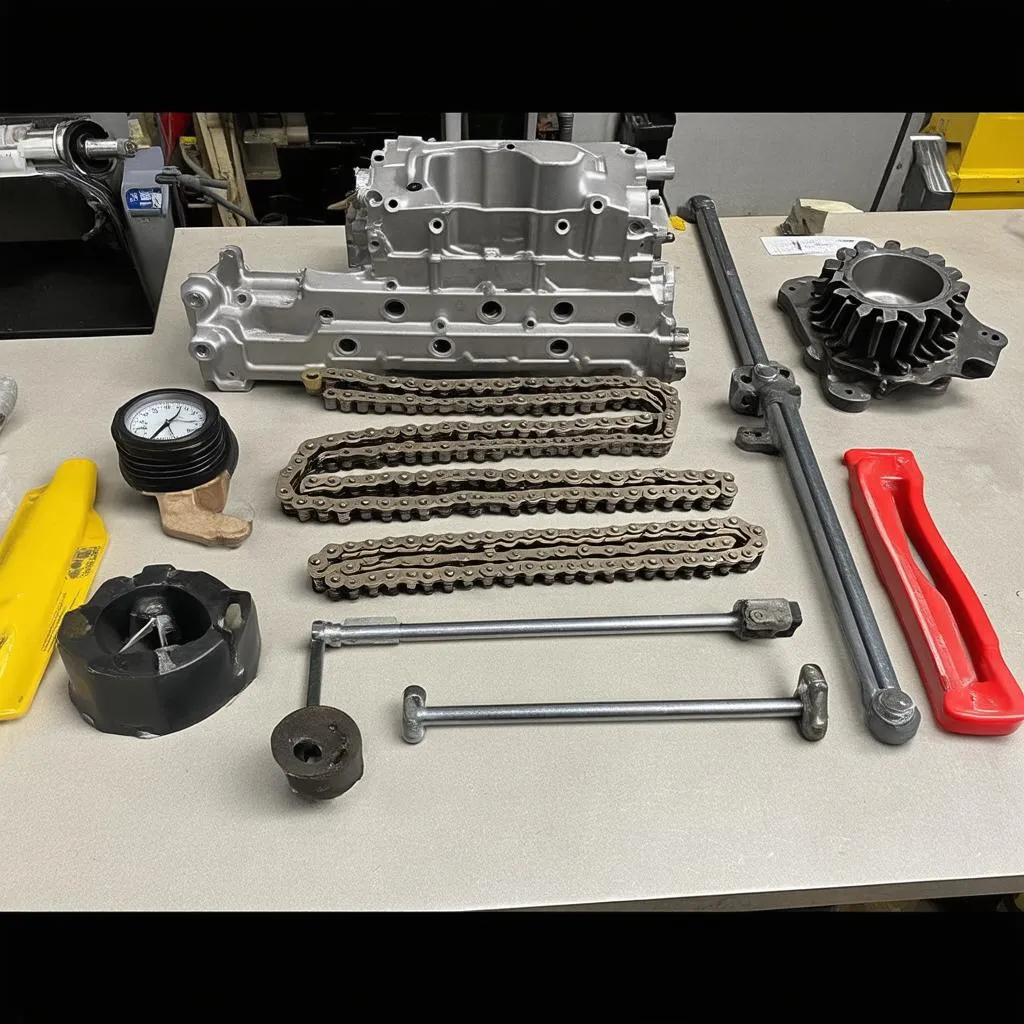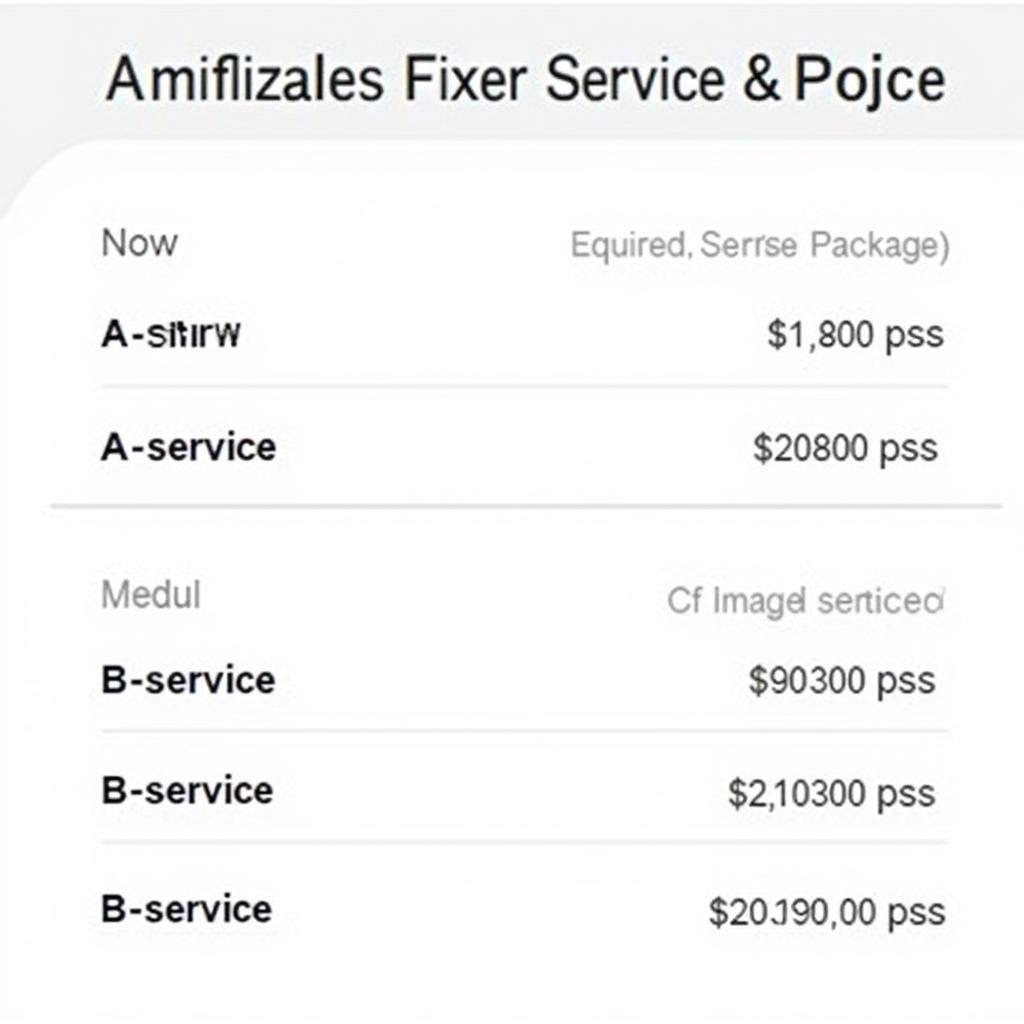Experiencing a “Check Engine” light is never a pleasant surprise, especially for Mercedes owners. While a myriad of issues could trigger this warning, the P0410 code is a common culprit. This code indicates a problem with the Secondary Air Injection (AIR) System, a crucial component in reducing emissions during cold starts.
This comprehensive guide will delve into the intricacies of the Mercedes P0410 code, providing you with the knowledge to diagnose and potentially fix the issue.
What Causes a P0410 Code in a Mercedes?
The P0410 code specifically points to a malfunction in the secondary air injection system. This system injects air into the exhaust stream during cold starts to expedite the catalytic converter’s heating process, reducing harmful emissions.
Several components could be responsible for triggering the P0410 code:
- Faulty Secondary Air Pump: The air pump itself may have worn out or become damaged.
- Malfunctioning Air Pump Relay: The relay responsible for powering the air pump could be faulty, preventing the pump from receiving power.
- Damaged Vacuum Lines: Leaks in the vacuum lines connecting the system can disrupt the air injection process.
- Clogged Air Injection Ports: Over time, carbon buildup can clog the ports responsible for injecting air into the exhaust.
- Faulty Secondary Air Injection Solenoid: This solenoid controls the flow of air into the system and could fail, disrupting the process.
secondary-air-injection-system|Mercedes Secondary Air Injection System|Diagram of a car engine’s secondary air injection system, highlighting the air pump, valves, hoses, and connections to the exhaust manifold.
Recognizing the Symptoms of a P0410 Code
While the “Check Engine” light is the most obvious indicator, several other symptoms might accompany the P0410 code:
- Rough Idling: The engine might experience rough idling, especially during cold starts.
- Decreased Fuel Economy: A malfunctioning secondary air injection system can negatively impact your Mercedes’ fuel efficiency.
- Hissing Sounds: You might hear hissing sounds coming from the engine bay, indicating air leaks in the system.
check-engine-light-dashboard|Car Dashboard with Check Engine Light On|Close-up photo of a car dashboard with the “check engine” light illuminated.
Essential Tools for Diagnosing and Fixing the P0410 Code
Before diving into the repair process, gathering the necessary tools is crucial:
- OBD-II Scanner: To read and clear diagnostic trouble codes.
- Multimeter: For testing electrical components like relays and solenoids.
- Hand Tools: A basic set of hand tools will be necessary for accessing and replacing various components.
- Replacement Parts: Depending on the diagnosed issue, ensure you have the necessary replacement parts like an air pump, relay, or vacuum lines.
obd2-scanner-connected-car|Mechanic Using OBD2 Scanner on Car|A mechanic’s hand connecting an OBD2 scanner to a car’s diagnostic port.
Step-by-Step Guide to Fixing the P0410 Code
- Diagnose the Issue: Begin by connecting your OBD-II scanner to your Mercedes’ diagnostic port and retrieving the stored trouble codes.
- Inspect the Air Pump: Visually inspect the secondary air pump for any signs of damage or wear. Check for any loose connections or damaged wiring.
- Test the Air Pump Relay: Use a multimeter to test the air pump relay for continuity and proper function.
- Examine Vacuum Lines: Carefully inspect all vacuum lines connected to the secondary air injection system for cracks, leaks, or loose connections.
- Check Air Injection Ports: With the engine off and cool, inspect the air injection ports on the exhaust manifold or headers for any signs of clogging.
- Replace Faulty Components: Based on your diagnosis, replace any faulty components such as the air pump, relay, vacuum lines, or solenoid.
Frequently Asked Questions about the Mercedes P0410 Code
Can I still drive my Mercedes with a P0410 code?
While the car might seem drivable, it’s crucial to address the P0410 code promptly. Driving with a malfunctioning secondary air injection system can damage other components, lead to failed emissions tests, and potentially reduce fuel efficiency.
Is it safe to clear the P0410 code without fixing the issue?
Clearing the code without addressing the underlying problem is not recommended. The code will reappear if the issue persists, and ignoring it can lead to more severe problems down the line.
Are there any preventative measures to avoid the P0410 code?
Regular maintenance is key. Ensure scheduled inspections include checking the secondary air injection system, including the pump, relay, vacuum lines, and air injection ports.
Looking for reliable diagnostic tools for your Mercedes? Explore Cardiagtech’s range of professional-grade automotive diagnostic equipment to enhance your troubleshooting capabilities. You can learn more about Mercedes diagnostic codes on our Mercedes-Benz Diagnostic Codes page. Additionally, if you’re working with a Mercedes R230, our guide on how to clear malfunction codes with an R230 scanner can be extremely helpful.
Conclusion
Addressing the Mercedes P0410 code promptly is essential for maintaining your vehicle’s optimal performance and minimizing emissions. By understanding the system, recognizing the symptoms, and following the diagnostic steps, you can effectively tackle this issue. Remember, using a high-quality OBD-II scanner like those offered by CARDIAGTECH can significantly aid in accurately diagnosing and resolving this and other trouble codes, keeping your Mercedes running smoothly. If you’re dealing with a specific model like the 2001 Mercedes-Benz SLK320, you might find our resource on common diagnostic codes for this model useful: 2001 Mercedes-Benz SLK 320 Diagnostic Code.


